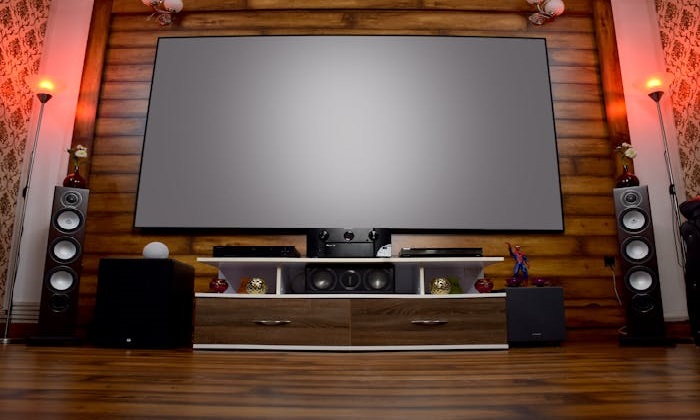Whether you’re setting up a home theater, a conference room, a classroom, or a worship space, choosing the right speaker is critical for delivering high-quality audio. Speakers are more than just boxes that produce sound—they determine clarity, volume, and the overall audio experience. However, not all speakers are the same, and understanding the differences can save you time, money, and frustration.
In this blog, AVCore Audio Video Consultants will explore the various types of speakers, their applications, and tips for selecting the right one for your needs.
1. Why Choosing the Right Speaker Matters
Speakers convert electrical signals into sound waves, making them central to any audio setup. Using the wrong type of speaker can result in:
Poor sound quality or distortion
Uneven sound coverage in a room
Difficulty communicating in conferences or classrooms
Reduced engagement in presentations or events
By understanding the different types of speakers and their functions, you can ensure clear, immersive, and effective sound for any environment.
2. Main Types of Speakers
Speakers can be categorized by design, functionality, and placement. Here are the main types you should know:
a) Bookshelf Speakers
Design: Compact, meant to sit on shelves or stands
Sound Profile: Clear midrange and treble, moderate bass
Applications: Home theaters, small offices, personal listening spaces
Pros: Space-efficient, good clarity for small to medium rooms
Cons: Limited bass output, may require a subwoofer for low frequencies
Bookshelf speakers are ideal for smaller environments where space is limited but sound clarity is essential.
b) Floor-Standing (Tower) Speakers
Design: Tall, often full-range speakers standing directly on the floor
Sound Profile: Rich, powerful sound with strong bass
Applications: Home theaters, auditoriums, large conference rooms
Pros: Excellent sound range, better bass performance
Cons: Bulky, requires significant floor space
Tower speakers are preferred in spaces where high volume and full-range sound are needed without additional subwoofers.
c) In-Wall and In-Ceiling Speakers
Design: Installed flush within walls or ceilings
Sound Profile: Can provide surround sound or general room coverage
Applications: Conference rooms, classrooms, home theaters
Pros: Space-saving, aesthetically clean
Cons: Installation is permanent, may require professional setup
These speakers are perfect for shared spaces where discreet audio solutions are required without compromising room design.
d) Satellite Speakers
Design: Small, compact speakers often paired with a subwoofer
Sound Profile: High-frequency detail, relies on subwoofer for bass
Applications: 5.1 or 7.1 surround sound systems, computer setups
Pros: Easy placement, versatile
Cons: Cannot produce deep bass alone
Satellite speakers are excellent for surround sound setups, providing clear treble and midrange sounds while the subwoofer handles low-end frequencies.
e) Subwoofers
Design: Dedicated speaker for low-frequency sounds (bass)
Sound Profile: Deep, resonant bass
Applications: Home theaters, large auditoriums, music studios
Pros: Enhances overall audio experience, powerful low-end sound
Cons: Needs to be paired with other speakers for full-range sound
Subwoofers are essential for music, films, and presentations that require impactful bass to complement other speakers.
f) Soundbars
Design: Long, narrow speakers with multiple drivers inside a single unit
Sound Profile: Wide sound dispersion, often simulates surround sound
Applications: TVs, small conference rooms, classrooms
Pros: Space-saving, easy setup
Cons: Limited bass, not as immersive as full speaker systems
Soundbars are ideal for compact spaces where simplicity and minimal installation are priorities.
g) Portable and Bluetooth Speakers
Design: Compact, wireless, battery-powered
Sound Profile: Varies widely; designed for convenience
Applications: Outdoor events, small meetings, personal use
Pros: Easy to move, wireless connectivity
Cons: Limited volume and sound range for large spaces
These speakers are great for temporary setups or areas where wired connections are impractical.
h) Column Array / Line Array Speakers
Design: Tall, narrow arrays of multiple drivers aligned vertically
Sound Profile: Focused sound projection, even coverage over long distances
Applications: Auditoriums, large conference halls, houses of worship
Pros: Excellent coverage, reduces echo and dead zones
Cons: Expensive, requires professional installation
Column and line arrays are used in professional environments where consistent sound coverage is critical, such as large halls or performance spaces.
3. Factors to Consider When Choosing Speakers
When selecting speakers, consider the following:
Room size and layout: Larger rooms need higher output and more coverage.
Purpose: Music, speech, presentations, or movies require different sound characteristics.
Placement: Ceiling, wall, tabletop, or floor placement affects sound dispersion.
Budget: Higher-end speakers deliver better quality, but balance cost with performance needs.
Integration: Ensure compatibility with existing AV systems, amplifiers, or conferencing platforms.
4. Importance of Professional Consultation
Choosing the right speaker isn’t just about picking a model from a store. Professional audio-video consultants like AVCore India can provide:
Room analysis: Acoustic assessment to determine optimal speaker type and placement.
Equipment recommendations: Matching speakers to your AV system for best performance.
Installation: Proper mounting, wiring, and calibration to maximize sound quality.
Ongoing support: Maintenance, troubleshooting, and upgrades as technology evolves.
Working with experts ensures your audio system delivers clear, consistent, and reliable sound tailored to your space.
5. Tips for Optimizing Speaker Performance
Even after selecting the right speakers, proper setup is essential:
Position speakers at ear level for seated audiences when possible.
Avoid placing speakers in corners where sound can become boomy.
Use acoustic treatments to reduce echo and reverberation.
Test speaker placement with multiple people in the room to ensure even coverage.
Calibrate volume levels and equalization to match room acoustics.
These steps help maximize clarity and minimize listener fatigue.
Conclusion
Understanding different types of speakers is crucial for creating the best audio experience. From bookshelf and tower speakers to subwoofers, soundbars, and line arrays, each type has unique strengths suited to specific spaces and applications. By considering room size, purpose, placement, and budget—and partnering with professional AV Consultants – you can ensure your AV system delivers clear, immersive, and reliable sound for every environment.
Whether it’s a home theater, classroom, conference room, or worship space, selecting the right speaker system transforms the way people experience audio—making communication, presentations, and entertainment truly impactful.


